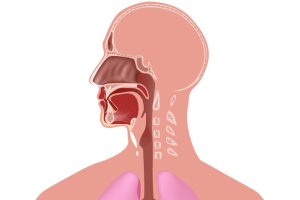Nasality: What Does It Mean?

Now that we have discussed the underside of the nasal cavity with articles about the hard and soft palates, we can move on to a somewhat controversial topic: nasality. While we will delve into the nasal cavity and define nasality, it can be a tricky subject to find consensus on. We will do our best to deliver as much evidence as possible for you to decide on your own.
Disclaimer: this series is meant to demystify some of the commonly used lingo in the voice studio and beyond. I will give evidenced information and cite sources so you can dive deeper.
So, What is Nasality?
Nasality, as defined in the Cambridge Dictionary, is “the quality of a person’s voice that has a particular sound because air is going through their nose when they speak.” We can extrapolate that by shifting the word speak to sing. Definitionally, nasality requires the soft palate to lower so that air can enter the nasal cavity. The nasal cavity, as defined by the NIH, is “The space inside the nose. The nasal cavity lies above the bone that forms the roof of the mouth and curves down at the back to join the throat.” Nasality often adds a “hum” quality to sound that emanates from the nose. Try it by humming and focusing your attention on your nose and recording yourself to hear how nasality sounds in your voice.
How Do We Use Nasality in Singing?
Nasality is inherent in some of the sounds that we make in singing. The nasal consonants in English are /m/ like Mike, /n/ like night, and /ŋ/ like sing. Other common classical languages have specific nasals like French with /ɑ̃/ /ɔ̃/ /ɛ̃/ and /œ̃/ that require nasality to be authentic within the language. Due to these consonants and nasal vowels, nasality is a necessity for singing. Beyond the consonants and particular vowels, how much nasality should be used for classical singing?
As with many topics discussed in this series, the answer isn’t definitive. Many teachers will say to plug the nose for most all of the range, and others will say to use it when it is helpful. A great article on nasality was written in 2020 by Dr. Nick Perna, who is currently an associate professor of voice and vocal pedagogy at the University of Colorado, Boulder. Dr. Perna lays out some evidenced acoustic phenomena that comes from using nasality, and his general determination on nasality relies on individual student needs. He does say that for contemporary vocal styles that he advises more nasality due to the genre needs.
Dr. Brian Gill of Indiana University wrote an article in 2020 in support of using a narrow velopharyngeal opening to help stabilize passaggi events and provide more spectral power in areas of the voice associated with the singer’s formant. In layman’s terms, using a little bit of nasality can help smooth out voice breaks and give more power to carry sound over orchestras. Both articles cite acoustic benefits for using nasality in certain sections of the voice. While the soft palate must have lift to open the pharynx (back of the mouth), determining absolute lift to close off the nasal cavity is up for debate with many styles, including classical and operatic singing.
The long and the short of nasality is that it is necessary for the text, but it’s usage in other parts of the voice should be discussed with your teacher. As with everything, play around with accessing nasality or blocking it out completely and find ways to help strengthen the weaknesses in your singing. Every aspect of the vocal tract can help in some way and realizing that there are very few absolutes will allow you to find the best sounds that you can make!
What’s next?
Please reach out for any article term suggestions! Always remember that the goal of singing is ease and effectiveness!
